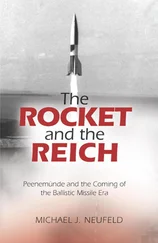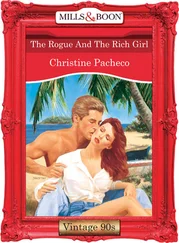Throughout his career, Nixon’s all-consuming ambition was fueled by resentment and envy, by the sense that he would always be excluded from the top decks where men like Allen Dulles and Christian Herter belonged. When Nixon was finishing law school at Duke University in 1937, he spent a frigid Christmas weekin New York searching for a starting position with a prestigious Wall Street firm. He managed to get on the appointments calendar at Sullivan and Cromwell, the firm of his dreams. As he waited in the lobby, he marveled at the “thick, luxurious carpets and the fine oak paneling,” a picture of corporate power and comfort that stayed with him for many years. But he did not meet the Dulles brothers during his job interview, and Sullivan and Cromwell—which, like all the top New York firms of the day, drew their young talent almost exclusively from the Ivy League—showed no interest in this product of Whittier College and Duke Law. Nixon, who could only afford a room in the Sloane House YMCA on West Thirty-Fourth Street during his weeklong job hunt, felt a bitter sense of rejection by the time he returned to school. “He was not charmed by New York,” remembered a Duke classmate of Nixon’s. He felt the city had kicked him in the teeth.
Yet here he was, ten years later, being wined and dined on the Queen Mary in the same privileged company as Allen Dulles. The spymaster and Herter took the young congressman under their wing during the ocean crossing. They schooled him about the importance of foreign aid as a facilitator of U.S. economic and political interests. By the time the delegation returned to the United States in early October, Nixon was fully on board as a supporter of the Marshall Plan. The congressman’s new enthusiasm for Truman’s ambitious proposal did not go down well with his conservative supporters back home. But Nixon was shrewd enough to figure out that senior members of the GOP’s East Coast elite like Dulles and Herter could be of more benefit to him than the Southern California citrus growers and businessmen who had launched his career.
The political relationship forged between the rising politician from California and Dulles’s East Coast circle would become one of the most significant partnerships of the postwar era. Nixon grew into a potent political weapon for the Dulles group, a cunning operator who managed to accrue solidly conservative credentials with the Republican Party’s popular base while dependably serving the interests of the GOP’s privileged leadership class. Together, the Dulles circle and Richard Nixon would bring about a sharp, rightward shift in the nation’s politics, driving out the surviving elements of the New Deal regime in Washington and establishing a new ruling order that was much more in tune with the Dulles circle’s financial interests. The Dulles-Nixon alliance proved masterful at exploiting the Cold War panic that gripped the nation, using it to root out Rooseveltian true believers from government, along with a few genuine Communist infiltrators who posed a marginal threat to national security. When Washington’s anti-Communist witch hunt raged out of control and threatened to consume even those who had lit the flame, Nixon again proved of great use to Dulles, working with him to keep the inferno within safe boundaries. In return for his services, Nixon won the patronage of the kingmakers in the Dulles circle, ensuring the politician’s steady rise toward Washington’s top throne.
Years later, after Nixon’s climb to power was stalled by his loss to John F. Kennedy in the 1960 presidential election, Dulles sent Nixon a warm letter, reminiscing about their relationship and noting that “ we have worked togethersince the days of the mission on the Marshall Plan.” The Dulles-Nixon alliance actually preceded their voyage on the Queen Mary , but the spymaster was understandably loath to officially record its true origins. According to John Loftus, the former Justice Department Nazi hunter, the two men first came in contact in late 1945, when young naval officer Richard Nixon was shuttling up and down the East Coast, wrapping up war-related business for the Navy. While sifting through the military paperwork, Nixon came across eye-opening Nazi documents that had been shipped to an old torpedo factory on the Virginia side of the Potomac. Some of these documents revealed how the Dulles brothers had helped launder Nazi funds during the war. Loftus, citing confidential intelligence sources, alleged that Dulles and Nixon proceeded to cut a deal. “Allen Dulles,” reported Loftus, “told him to keep quietabout what he had seen and, in return, [Dulles] arranged to finance the young man’s first congressional campaign against Jerry Voorhis.”
Dulles and his clients in the banking and oil industries had ample reason to target Voorhis, a five-term Democratic congressman and ardent New Dealer from Nixon’s home district in Southern California. The crusading congressman was a particularly troublesome thorn in the sides of Wall Street and Big Oil. Voorhis shook the banking industry by pushing for the federal government to take over the nation’s privately owned, regional Federal Reserve Banks—a radical proposal that briefly won President Roosevelt’s support, but ultimately failed to overcome the banking lobby. Voorhis was more successful in his efforts to curb the power of the major oil companies. In 1943, after learning that the Navy was about to grant Standard Oil exclusive drilling rights in the sprawling Elk Hills naval reserve in central California, Voorhis exposed the sweetheart deal and succeeded in blocking it. The congressman earned yet more of the oil industry’s wrath by taking aim at one of the industry’s most cherished tax breaks, the oil depletion allowance, and by stopping offshore drilling plans along the California coast.
Voorhis also posed a direct legal threat to the Dulles brothers through his efforts to shine a light on the wartime collusion between Sullivan and Cromwell clients like Standard Oil and DuPont chemical company and Nazi cartels such as IG Farben. Voorhis further unnerved the Dulles circle by demanding a congressional investigation ofthe controversial Bank for International Settlements, charging that bank president Thomas McKittrick, a close associate of the Dulles brothers, was a Nazi collaborator.
Corporate America viewed Washington politicians like Voorhis as the personification of their New Deal nightmare. In his midforties, Voorhis had the granite-jawed good looks of a movie star. He also combined the same upper-class breeding and populist instincts that made Roosevelt such a formidable threat. The son of an automobile executive, Voorhis was educated at the Hotchkiss School and Yale. But as a young man, he rejected his privileged background, marrying a social worker, going to work on a Ford assembly line, and becoming a Socialist. He changed his registration to the Democratic Party in 1934 when he entered California politics, but his congressional voting record demonstrated he was a stalwart of the party’s left wing.
In 1944, Voorhis published a book titled Beyond Victory , making clear that, as a leader of the progressive caucus in Congress, he was determined to keep pushing for ambitious reforms in postwar America. Voorhis sent alarms through the ranks of his corporate foes by calling for the nationalizationof the transportation, energy, and utility industries as well as sweeping banking reforms. He wanted to create a national credit union to compete with private banks and to expand the Social Security system as a way to establish a nationwide minimum income.
Voorhis’s business opponents began searching for a strong candidate to unseat their nemesis long before the 1946 congressional race. While still in uniform, Nixon was recruited to run against the popular progressive by Herman Perry, a family friend who managed the Bank of America’s Whittier branch. Nixon later insisted that no powerful interests were behind his political debut, just “ typical representatives of the Southern California middle class: an auto dealer, a bank manager, a printing salesman, a furniture dealer.” But Voorhis knew the truth. He later wrote in an unpublished memoir that he had been targeted by powerful East Coast bankers and oilmen, who saw him as “one of the most dangerous men in Washington.” In the fall of 1945, according to Voorhis, one major New York banker flew to Southern California, where he sat down with local bankers and “bawled them out” for allowing such a progressive firebrand to represent their district.
Читать дальше











